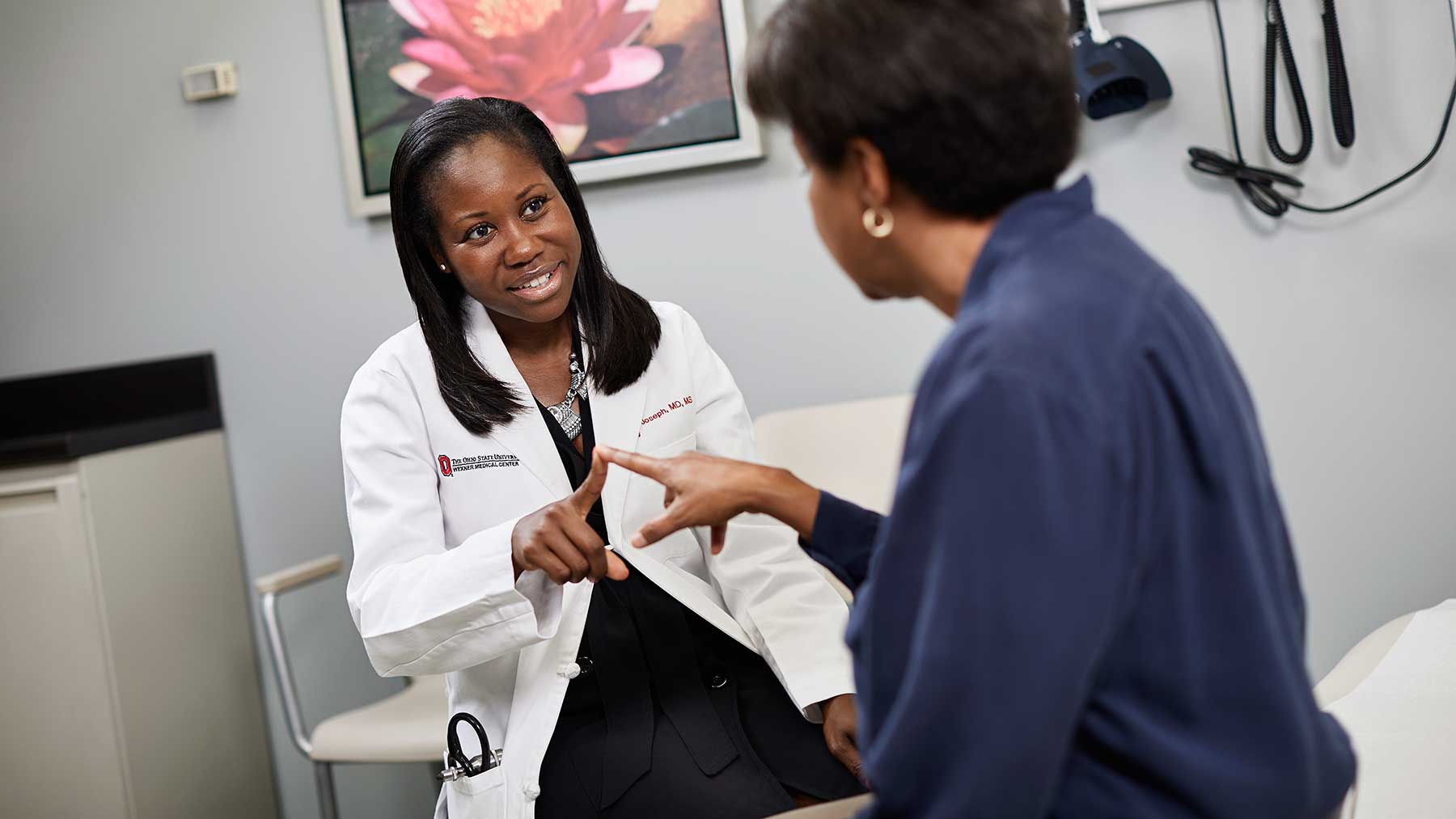10 unexpected early signs of Parkinson's

People may be surprised to learn about some behaviors or problems that are indicators of Parkinson’s disease – showing up well before tremors, stooped posture or feet shuffling.
Get informed about these early signs and possible risk factors from Reversa Joseph, MD, a movement disorders specialist at The Ohio State University Wexner Medical Center.
Most initial clues are subtle for the neurodegenerative disease that affects the area of the brain that regulates movement.
Take note of these Parkinson’s signs in yourself, and also pay attention to your loved ones because Dr. Joseph says relatives often are first to recognize a change in their family members.
10 unexpected signs of Parkinson's
1. Slower at daily activities
- Not keeping pace when walking with others
- Need more time to button your shirt or tie your shoes
2. Changes to your walking
- Smaller steps (not necessarily shuffling yet)
- Not swinging your arms while walking
- Multiple steps required to turn around when walking, possibly tripping up the feet
- One foot turning inward or outward a bit, causing tripping
- One arm could also be bent inward
“The turning of the arm or foot, called dystonia, is often one of the first signs we see, so we’re always on the lookout for it,” Dr. Joseph says.
3. Other movement troubles
- Difficulty getting up from a chair or rolling over in bed
4. Subtle changes to your expression
- Blinking your eyes less
- Diminished expression to your face
“Patients can look back at photos from several years before and see more of a smile or more facial expression,” she explains.
5. Shrinking handwriting
- Characters are smaller compared to your writing years before
6. Finger jerk
- A thumb twitches from time to time
- Or maybe another finger, or even a leg, jerks intermittently
“We could see any of these clues that we’ve listed even before a tremor would start,” Dr. Joseph points out.
Other possible indicators of Parkinson’s
Doctors have known for a long time that family history of Parkinson’s increases your risk, but they also watch for:
7. Loss of sense of smell
8. Chronic constipation
9. Depression
10. Acting out what you’re dreaming
- People with REM sleep behavior disorder might talk in their sleep and flail their arms and legs during dreams, accidentally hitting or kicking a person in the same bed.
“When people learn about the sleep disorder, they often say, ‘I’ve been doing that for years.’ They’re sometimes astonished to learn it’s an early symptom of Parkinson’s,” Dr. Joseph says.
Is it aging or is it Parkinson’s?
While we often slow down as we age with stiffer joints and stooped posture, doctors are looking for a constellation of symptoms and risk factors to diagnose Parkinson’s, she says.
Early detection is important
Some people never share with their doctor a subtle symptom, such as a periodic involuntary jerk of a finger, because it doesn’t cross their minds as something worrisome.
But Dr. Joseph advises not to wait until symptoms progress to get checked out. That finger jerk could progress into a full-blown tremor.
Dr. Joseph, who was inspired to treat patients with Parkinson’s when she saw a deep brain stimulation (DBS) procedure stop a patient’s tremor in medical school, wants you to know that it’s normal to feel scared about having symptoms evaluated for a possible Parkinson’s diagnosis.
But she encourages you to be brave and get an exam for this important reason: People who start Parkinson’s treatment earlier have less disability and longer lifespans!
Treatments for Parkinson’s
If you or your loved one is diagnosed with Parkinson’s disease, Ohio State will tailor your treatment plan to the assessment of your particular motor and non-motor symptoms. We offer a wide range of treatment options, from medications to therapy.
When medications cannot adequately treat Parkinson’s symptoms, deep brain stimulation may be an option. DBS treats a variety of disabling neurological symptoms including tremor, rigidity, stiffness, slowed movement and walking problems.




